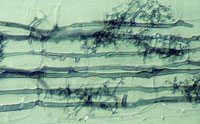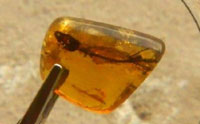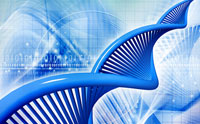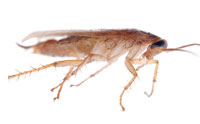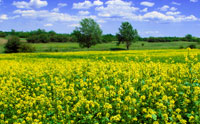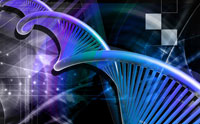Similar limb designs develop through very different pathways and point to common design. …read more Read more here: creation.com
These study results are particularly interesting because they utterly defy all predictions in the evolutionary paradigm—literally turning it on its head and showing that it is a fallible model of human origins. More… …read more Read more here: icr.org
Evolutionists say birds evolved from dinosaurs with flight-ready brains. …read more Read more here: AIG Daily
By Ken Ham Recently, I saw a headline that caught my eye. The secular journal Nature published an article titled “Genetic Adam and Eve did not live too far apart in time.” Now, secularists (and even some Christians) propose the idea that there was “Y-chromosome Adam” and “mitochondrial Eve”—basically the supposed ancestors of human beings. According to the article in Nature, secular scientists have redated when they believe these two ancestors existed. But you know, these evolutionary scientists have the entirely wrong starting point on this issue, which the opening line of the article makes clear: The Book of Genesis [More]
Amazingly, the plants that were not under insect attack themselves, but connected to a victimized plant by the underground fungal network, began to produce a defensive chemical response in their cells. More… …read more Read more here: icr.org
Is man an animal? A mammal? A primate? Or something more … …read more Read more here: creation.com
Is the pig’s love of wallowing in mud a legacy of having evolved in some muddy pond, billions of years ago? …read more Read more here: creation.com
One of the most noteworthy aspects of this vlincRNA research paper was the positive attitude of the scientists reflected in their premise of looking for purpose and function in the genome. More… …read more Read more here: icr.org
And other myths about the genetics and development of the sexes …read more Read more here: creation.com
Does a peek “into the minds of birds” provide a peek into the origin of ours? …read more Read more here: AIG Daily
In chapter 10 of his Origin of Species, Charles Darwin made a prediction: “No organism wholly soft can be preserved.” He’s been proven wrong-big time. Read more here: creation.com
Evolution of live-bearing lizards from lizards makes the news. …read more Read more here: AIG Daily
Evolving people? . . . Or just natural selection in action? …read more Read more here: AIG Daily
Those who say dinosaurs died out millions of years ago never expected to find the real skin of a hadrosaur, which now might be able to tell us about their colour. …read more Read more here: creation.com
This amber find is remarkably rare because it not only preserves the entire body of a vertebrate, it also preserves some of that creature's original soft tissues. More… …read more Read more here: icr.org
It takes much more than calcium to make strong bones. …read more Read more here: AIG Daily
Fossil ant found alive! by David Catchpoole Entombed in amber (Figure 1), this beautiful fossil Gracilidris ant isn’t about to run anywhere in a hurry. Alex Wild <http://www.myrmecos.net> Gracilidris ant How long has it been like that? Conventional dating puts the geological age of such Dominican amber fossils (i.e. amber found in the Dominican Republic, on the island of Hispaniola in the Caribbean) as being from the upper Oligocene or lower Miocene.1 That is, around 15–20 million years old. And with this fossil being the youngest (in fact, the only) specimen of this ant ever identified, the genus Gracilidris has [More]
By Ken Ham After reading your Scriptures this morning, I suggest you read the recent web article on the incredible bees by Dr. Elizabeth Mitchell. Fascinating! Just more evidence that if people don’t believe in the Creator God they are without excuse. The article begins as follows: Honeybees depend on their right antennae to differentiate friends from foes, scientists have learned. Previous studies have shown that bees use their right antennae to process short-term memories and their left for long-term memories. Therefore, explains neuroscientist Giorgio Vallortigara, “We tried to investigate whether the left and the right antennae play different roles in social [More]
Altogether, the stored energy from the legs, hips, torso, shoulder girdle, and wrist loads its force to that of the appropriate muscle energies onto the projectile. The end result? Professional pitchers can throw baseballs at close to 90 mph over 100 times during a three-hour baseball game. More… …read more Read more here: icr.org
The term “Junk DNA” should itself be relegated to the trash bin due to the fact that scientists are now discovering that the entire genome is pervasively functional. More… …read more Read more here: icr.org
While most cockroaches like sugar, a study found that some do not. These sweet-toothless insects are called “glucose-averse,” and they have special biological equipment that shows they are extremely well-designed creatures. More… …read more Read more here: icr.org
DNA from an ancient horse’s foot suggests horses have been horses for a long time. …read more Read more here: AIG Daily
Researchers discovered that even under highly controlled conditions, the model mustard plants they were studying exhibited an amazing level of bioengineering and performed mathematical operations. More… …read more Read more here: icr.org
Non-linear genetic information adds a whole new dimension that multiplies the challenge of comprehending a living cell's inner workings. More… …read more Read more here: icr.org
Embryology is observable, but the evolution of complexity is not. …read more Read more here: AIG Daily
Muco-viral symbiosis may be key to a ubiquitous immune system . . . but it’s not evolution. …read more Read more here: AIG Daily
A reassessment of the literature. …read more Read more here: creation.com






















